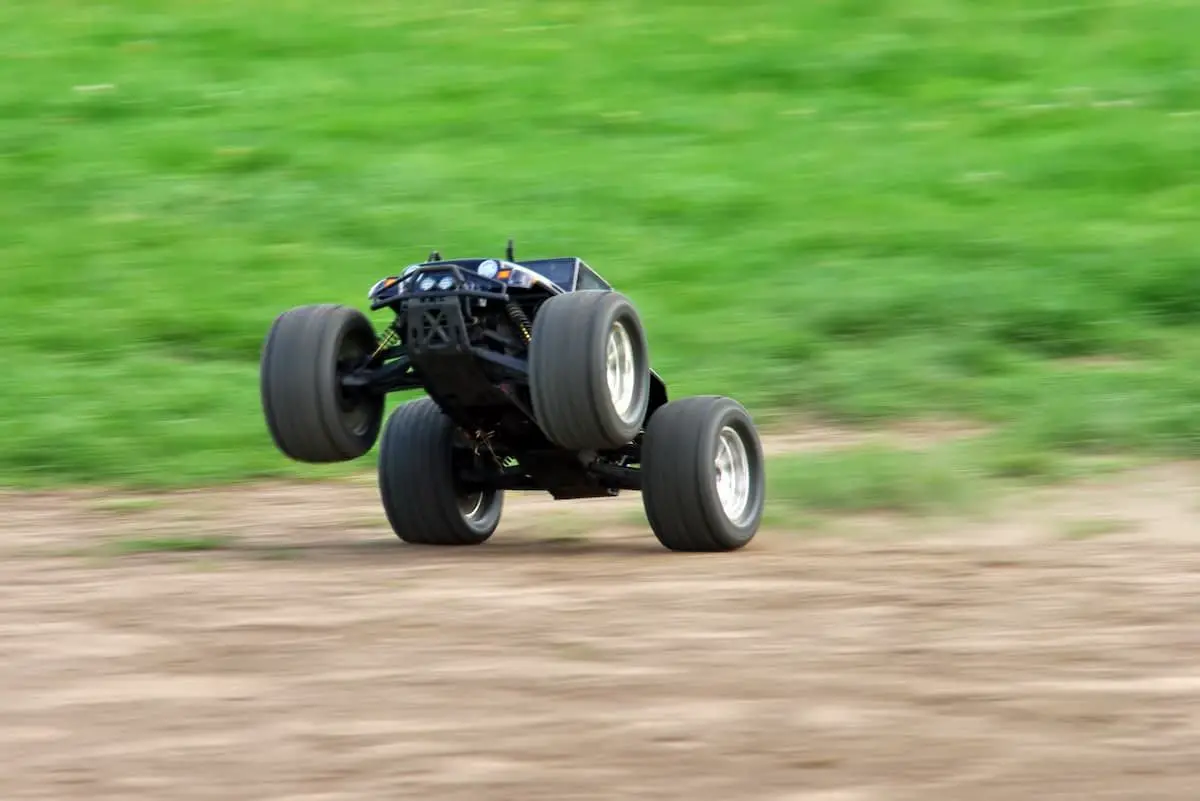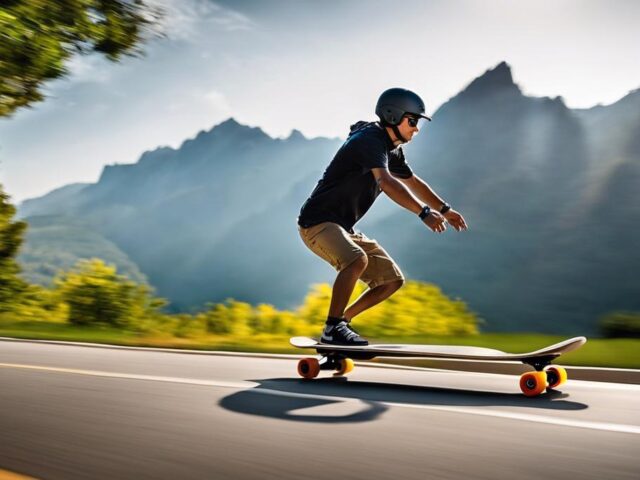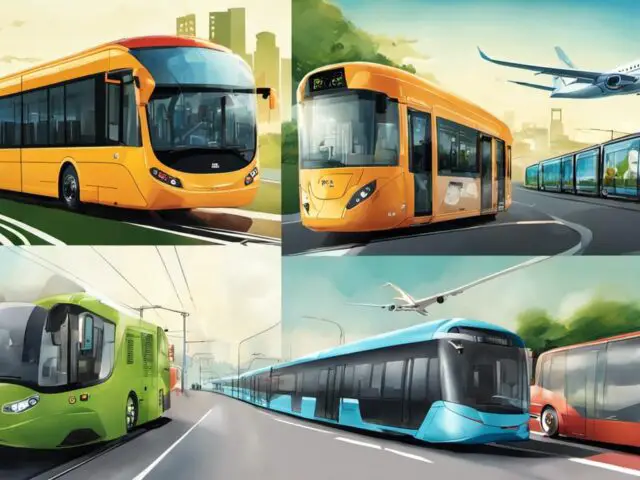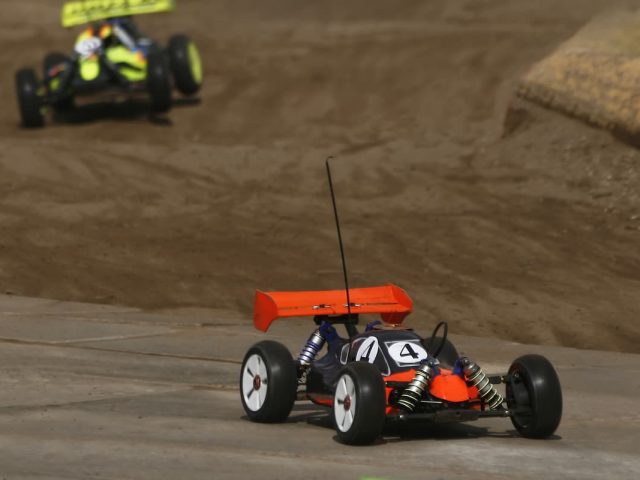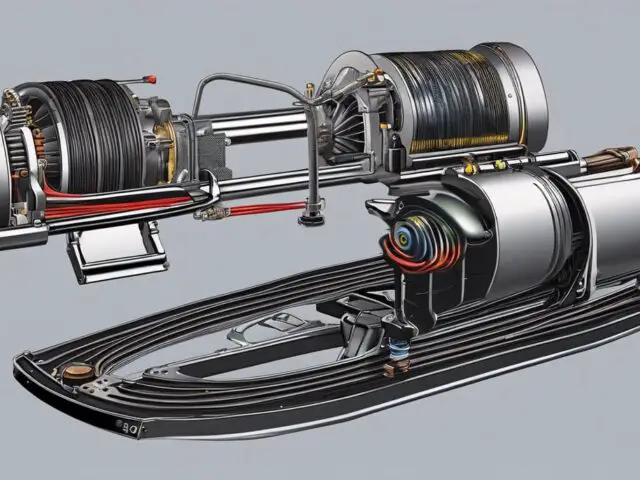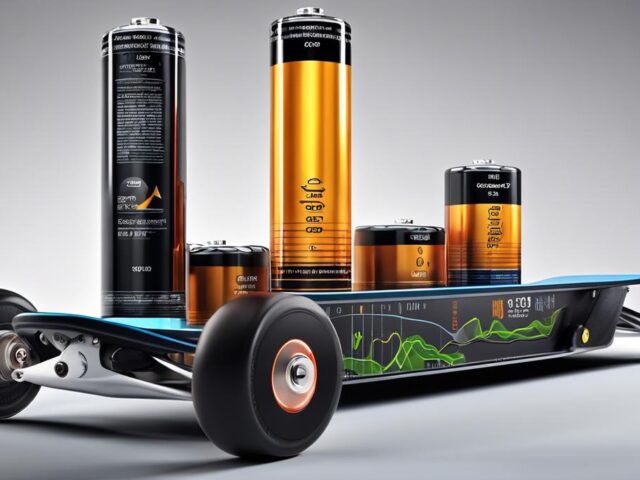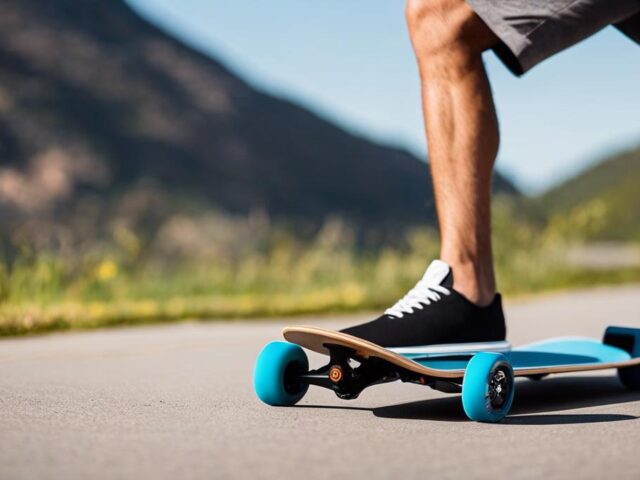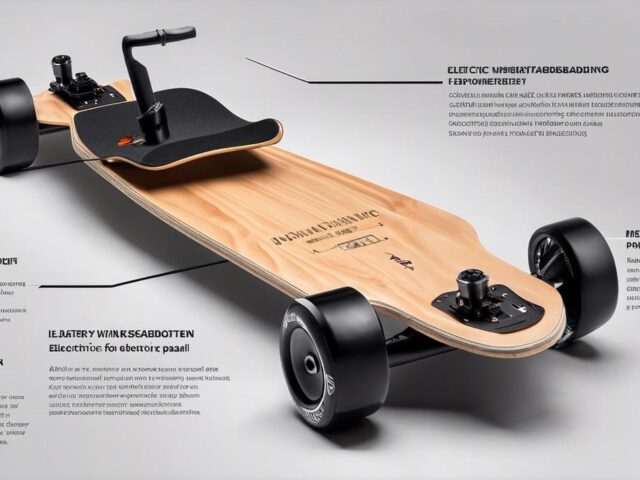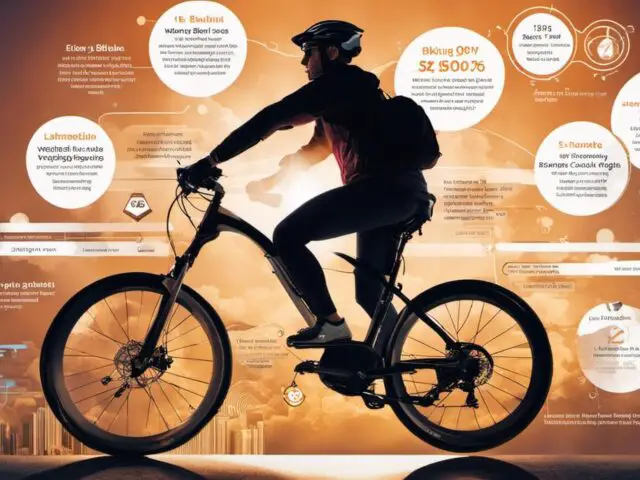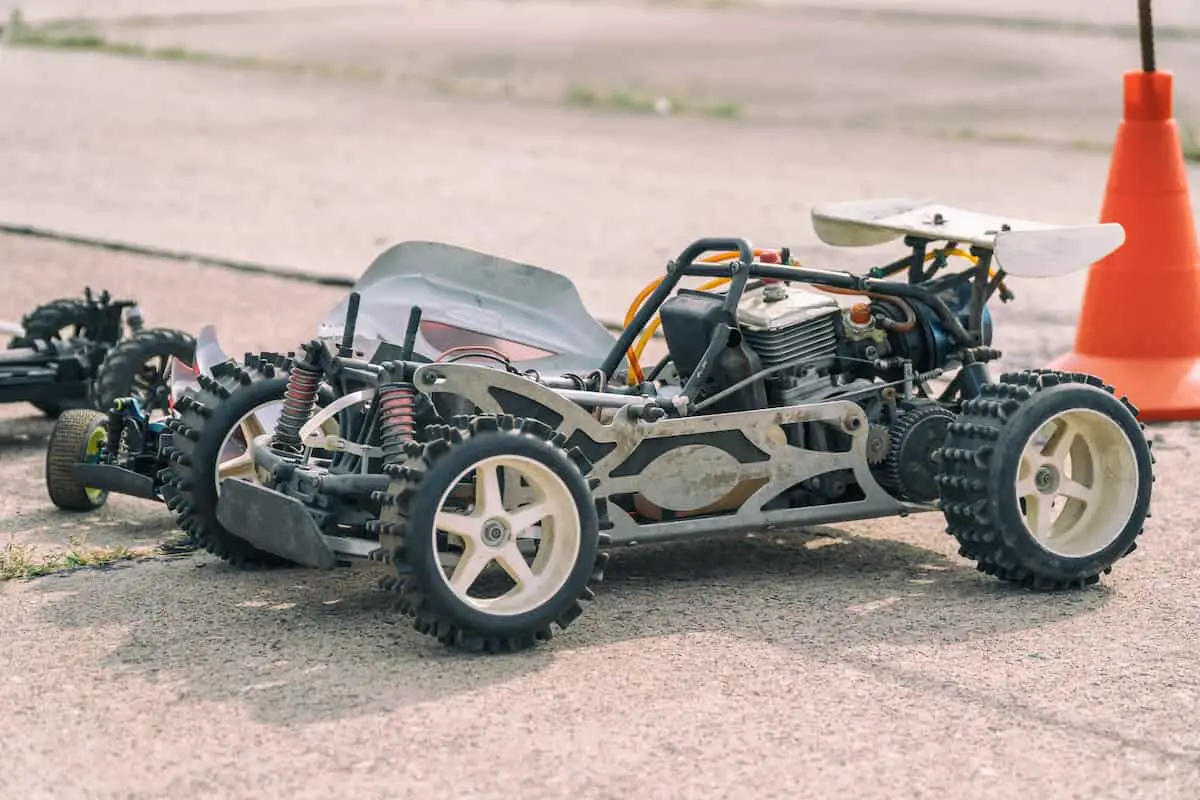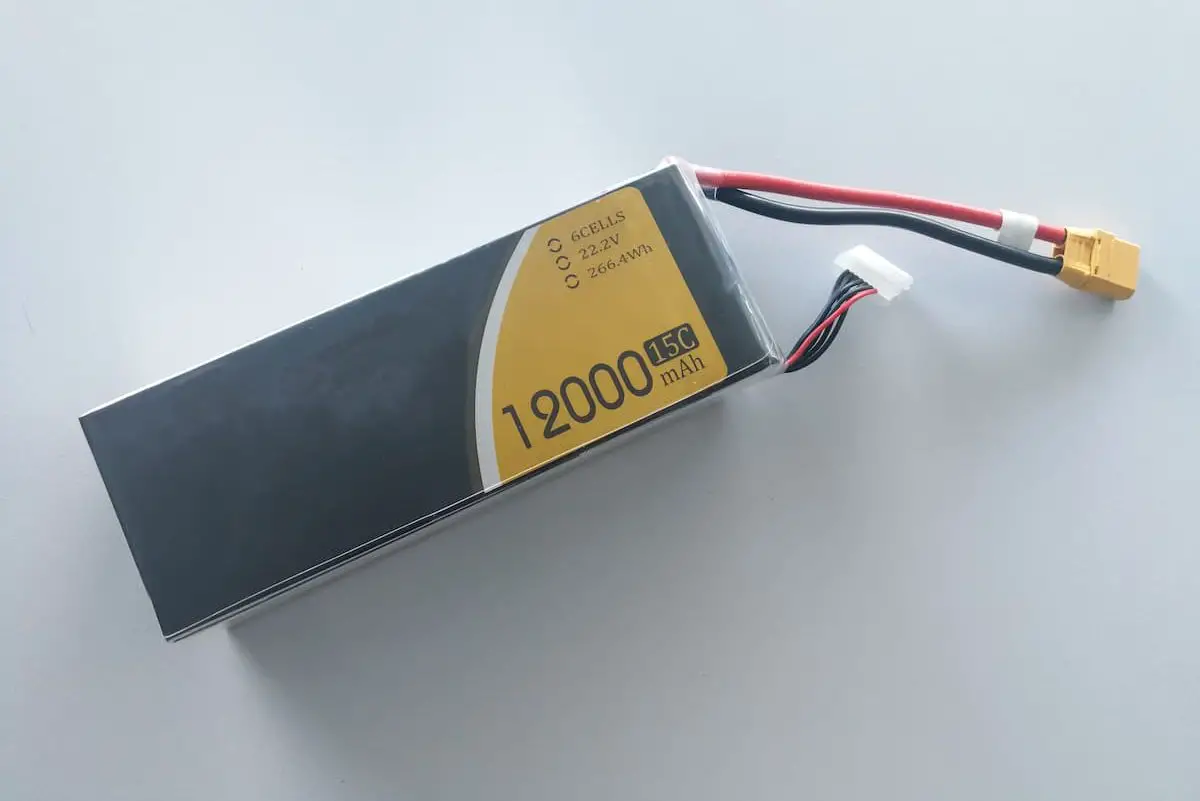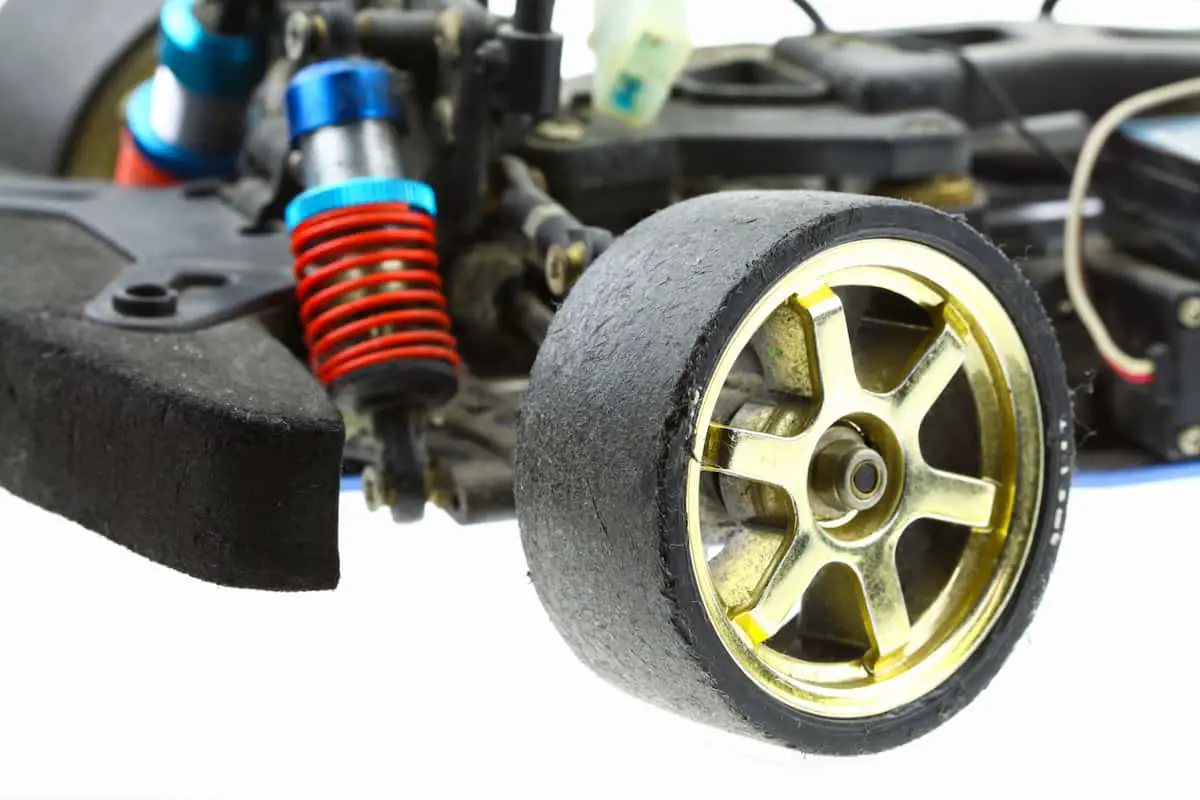One major thing asked by people who are interested in a remote-controlled car is around speed and how fast they can go. Well today I wanted to dig in and get you the complete answer to how fast can a remote control cars go?
Many top of the line RC cars can exceed 100 mph (160 km/h) in real world speed (Traxxas XO-1 Supercar) and not just scale speed. The average RC cars that you purchase from stores are going to be in the 20-70 mph range for speed depending on a wide array of internal hardware and configuration.
Lets take a look into what speeds are available and at what price points and car types as this can vary widely. Many types of RC cars even feature a more advanced modular car design which allows for upgrades and maintenance.
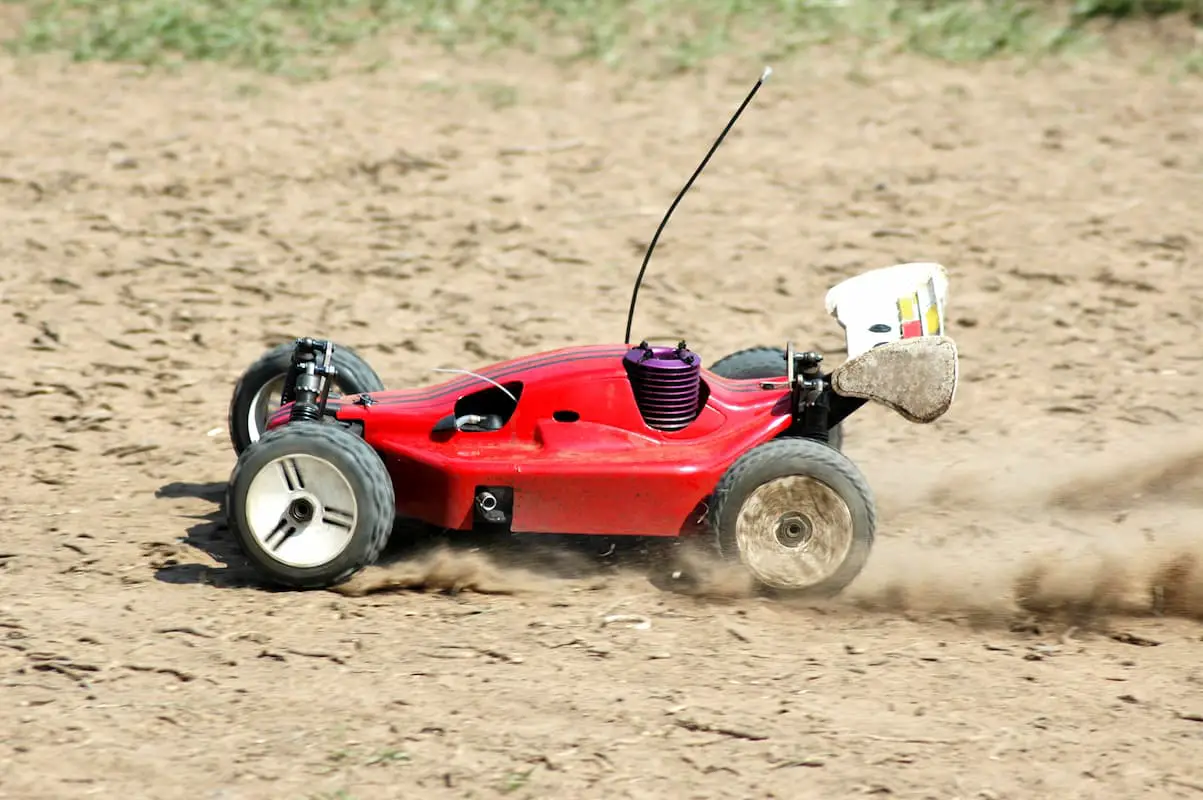
Speed Factors for RC Cars
When you are looking at remote control cars you need to know the different factors that provide speed if it is important to your purchase.
Here are the seven factors that contribute to the speed of an electric RC car:
- Acceleration Vs Maximum Speed
- Size of the Model
- Motors and Motor Technology
- Battery Type: NiMH vs. LiPo
- Gearing
- Tires, Wheels and Suspension
- Surface (Type of Terrain)
Each of these plays a roll in what the maximum potential speed will be for your RC car, learning these can help ensure you maximize performance.
Acceleration Vs Maximum Speed
When you look into the overall speed for radio control cars you need to understand that the acceleration and maximum, or top, speed arent the same thing.
While you would figure you want to have both of these this is a incorrect belief. You can improve either of these but in almost all cases an increase in one leads to a decrease in the other.
What is Acceleration?
At its core acceleration is about how fast a RC vehicle can attain their top speed and the timeframe from start to the maximum speed.
Many times you may see this referred to as 0-100mph in xx number of seconds…
Acceleration is the most vital component to you should you typically race in small confined areas featuring many short distance straightaways and frequent turns and bends.
What is Top Speed?
For top speed this is the fastest speed an RC car could go before it is pegged out, or unable to go any faster. This is perfect for those people who race in straight lines or have limited turns as top speeds need time to achieve.
- 25.2V extreme ESC and the largest brushless motor ever offered thrust XO-1 to 60 in 2.3 seconds and over 100mph with optional 3s LiPo batteries
- Includes telemetry sensors, TQi 2.4GHz Radio with Wireless Module, and TSM Stability Management to harness the power without sacrificing fun
- Shaft-driven all wheel drive with reinforced steel-gear differentials, shock-absorbing Cush Drive, and steel splined dual-CV driveshafts
- Machined 6061 aluminum C-hubs, steering knuckles, axle carriers, shock towers, and 17mm hex hubs
The one downside to fast cars is your control is paramount to success, you skills as a driver will play a large role in controlling fast top end cars.3
Examples High-Speed RC Electric Cars
When wanting to get a higher end, quicker car then demand will be heavy, especially when you start to move towards the 100 mph mark of the top performance cars like the one above by Traxxas, the XO-1.
Many may be looking for some good examples for high-speed RC cars that they could purchase and get that are stock speeds but could take upgrades and be tuned for higher performance.
| Image | Manufacturer | Description | Price | Prime | Buy |
|---|---|---|---|---|---|
 Top
Top Top
Top | ARRMA | ARRMA 1/7 Felony 6S BLX Street Bash All-Road Muscle Car RTR (Ready-to-Run Transmitter and Receiver Included, Batteries and Charger Required), Black, ARA7617V2T1 | Prime | Buy Now | |
Top | Traxxas | Traxxas XO-1 1/7 Scale AWD Supercar with TQi 2.4GHz Radio & TSM, Black | Prime | Buy Now | |
 | Losi | Losi RC Truck 1/6 Super Rock Rey 4WD Brushless Rock Racer RTR (Ready-to-Run) with AVC, Baja Designs, LOS05016T1 | PrimeEligible | Buy Now | |
 Top
Top
Top
Top | Traxxas | Traxxas 67076-4 Rustler 4x4 VXL Off Road Electric Remote Control RC Car with Remote Control for Adults and Kids, Red | Prime | Buy Now | |
 Top
Top
Top
Top | ARRMA | ARRMA RC Truck 1/8 KRATON 6S V5 4WD BLX Speed Monster Truck with Spektrum Firma RTR, Red, ARA8608V5T1 | PrimeEligible | Buy Now | |
 Top
Top
Top
Top | Redcat | Redcat Racing Shredder XTE Electric Truck, 1/6 Scale, Red | PrimeEligible | Buy Now | |
 Top
Top
Top
Top | Traxxas | Traxxas 67076-4 Rustler 4x4 VXL Off Road Electric Remote Control RC Car Chassis Body with Remote Control for Adults and Kids, Green | Prime | Buy Now | |
 | ARRMA | ARRMA RC Car 1/8 Typhon 6S V5 4WD BLX Buggy with Spektrum Firma RTR (Ready-to-Run), Black and Red, ARA8606V5 | PrimeEligible | Buy Now |
We are going to dig next into the sizes for your RC cars as there are a great variety of scales that you could choose to use for your racing depending on the need.
Size of the Model
RC cars come in a vast amount of scale, from the bigger 1/7th scale to incredibly small versions like 1/64th scale, normally this changes the costs and the performance that these cars can provide.
Size inevitably has an impact on how fast the model can move.
An RC vehicle that is a larger scale will typically weigh much more which will result in having a much slower acceleration and many times limited top end.
RC cars that are too small and lightweight, though, will conversely be much harder to control. This leaves many to find the right size for their need and figure out where they will need to compromise.
In addition, the larger the scale for the RC model the bigger the costs will be to upgrade along with maintain versus the smaller vehicles.
Understanding Scale Sizes
Many who are just starting to explore the RC car and RC hobby in general will often not understand “scale” and what it can mean to their purchases which can sometimes leave a sour mark.
They soon find out that the RC vehicle they bought is either much larger in size or conversely much smaller and less impressive than they believed, based off misleading packaging.
The benefit is that this buying issue is very simple to avoid with a little research prior. A scale model is a scaled down, or smaller version, of a real-world vehicle.
To give some examples and help you know some of the common names are: 1:8, 1:10, 1:12, 1:14, 1:32, and on. For those who aren’t mathematicians the higher the second number the smaller the RC vehicle will be.
To help you grasp this scaling better we can discuss using 1:10 scale, for a 1:10 scale model it will be 10 times smaller than the original model.
Remember, du to this, a scale size is incredibly relative to the original full-sized vehicle. That means that scale size is unfixed, as it will vary dramatically depending on the original they aim to replicate.
Understanding Scale Speed Vs Real World Speed
Many manufacturers who build and sell RC cars will often choose to advertise the scale speed of a model instead of the real world speed.
This isn’t dirty, it isn’t attempting to take advantage of the buyer as much as it is there to help experienced RC’ers know quickly how fast the vehicle could go.
The irritation comes more from the buyer who has no experience in purchasing an RC vehicle who can perceive it as misleading to get the sale.
To explain and show how this will look to you, if you had a 1:10th scale RC car that could go 100pmh, in a 1:10th scale then the real world speed for this model would be simply 10mph.
Make sure to read the box the remote control vehicle comes in and any materials you can read prior as some companies will put the real speed and not the scale speed, there is no guideline or requirement.
Motors and Motor Technology
Now to engines and engine tech, radio controlled cars and other vehicles use either a DC brushed or brushless (BLDC) motor(s).
Brushed Motors
The most common and less expensive version is the brushed motor, these are an older technology that can still provide amazing results and pack a punch, but they have issues.
A brushed motor unfortunately creates friction through the use of brushes inside the motor takes away some power that could otherwise go toward speed.
Brushless Motors
The newer and more expensive version is the brushless motor, these don’t lose electrical power to friction and brushes due to the fact there aren’t any.
That makes them superior in several ways:
- Much Less Noise
- More Efficient In Power Use
- Motors Last Longer
- Incredibly Low Maintenance
Brushless motors due to these factors are able to convert much more of their generated electrical power into mechanical (driving) energy. This efficiency has been shown before to be around the 15% mark.
Battery Type: NiMH vs. LiPo
Their are two types of batteries that are used in RC cars, these are the Nickel Metal Hydrate (NiMH) and the Lithium Polymer (LiPo).
Your batteries are incredibly vital to the way your RC vehicle will run and will directly impact the functionality in three core ways:
- The Speed of the RC Model
- Running (Drive) Time on a Single Charge
- Recharging (Down) Time
Below we are going to dig into the battery details to help you understand more about each type to help make sure you understand how they benefit your performance.
NiMH vs. LiPo
The next clear progression in our quest for speed has to be LiPo vs NiMH batteries.
Similar to brushed motors Nickel Metal Hydrate (NiMH) batteries are the more old technology, they are much less expensive, very safe to use, and much easier to maintain for general RC use.
Overall performance-wise, though, NiMH can’t hold a candle to the LiPo batteries in getting results, they’re not in the same league.
Basically, the NiMH cells have lower overall energy density and are less efficient than the LiPo batteries which can provide a bigger bang with less overall weight.
Lithium Polymer (LiPo) batteries provide a higher discharge rate while providing a larger energy density.
This means that they are able to channel more power at any one time which increases the power being supplied to the motors.
As an interesting thing to watch out for, some RC cars offer the ability to use either NiMH or LiPo. For many who are new to RC cars this can be helpful as the slightly more inexpensive and docile NiMH battery can be used while learning and then you could upgrade to the LiPo later.
Battery Compatibility
Each model RC has different compatibility options that can help you upgrade down the road or be stuck buying brand new.
Understanding up front that your new RC car can handle the extra power of different larger capacity batteries or migrate from NiMH to LiPo is nice as not all RC cars can.
As to upgrades, without advanced knowledge you could try and replace a one cell battery with a 2 or 3 to see if you can get more, longer performance.
This attempted conversion in batteries could damage your car though so it should be done with tremendous caution, nothing is good about destroying the RC car you love.
RC car batteries come in various shapes, sizes, and connectors. Make sure any new one you purchase is the right fit for your battery compartment and validate specs and measure it if you’re unsure.
Battery Life (Running Time)
The amount of time you can drive will be matched to the battery life of the rc vehicle. This should make them a critical item that you want to understand as it can mean the difference in your hours of play each day.
Most manufacturers will advertise their model runs for { X } number of minutes per single charge. This number though is based on the ideal circumstances and use, not based on how you drive as aggressive gas will use battery much faster.
View all details you are provided on the running times as an overly optimistic opinion and expect a little less than this advertised time.
Charging Time Matters (Down Time)
Additionally to the run time the length of the down time to recharge the battery to allow you to drive again is very important to your performance.
The more power and speed an RC model has, the faster its battery drains. There are two things to consider here:
- Time it Takes to Recharge – Charging times can vary hugely and range from 30 minutes to several hours.
- Invest in Extra Batteries – To help bypass short running times and long charging you can invest in extra batteries to play while others are charging.
It’s always a good idea to check both the cost and availability of upgraded batteries.
Tweaking Your RC Gearing
Upgraded the gearing your RC vehicle uses can increase maximum speed, acceleration, or both, of an RC.
There are two gears to consider here:
- Smaller Pinion Gear and Larger Spur – will increase acceleration, but it may shave a little off the top end.
- Larger Pinion Gear and Smaller Spur – is the way to go for faster top speeds, but it can result in slower acceleration.
In the end these choices will be more to get the desired results you want from racing your car, for example a curved track would be better with increased acceleration instead of a high top end.
Tires, Wheels and Suspension
Tires also play a role in how fast an RC car can go. The ones a model come with are not always the best set for it in almost all circumstances as they are generally stock.
The reason makers put an “average” tire on their stock models is to get the enthusiasts to upgrade along with providing generally balanced function across any surfaces.
These stock, low-quality, tires will typically have weaker traction and are not so durable to encourage additional upgrades.
Premium tires are the opposite and more cost-effective in the longer term.
Cars can reach higher speeds and handle corners and bends better with improved tires. Get to know which tires and diameters work best for your model.
Surface (Type of Terrain)
Many factors may also contribute to the overall performance and speed of an RC car and driving surface is one key factor.
Uneven and loose surfaces slow a vehicle down by a considerable amount along with wet, damp, or dry ground.
So, how fast your RC model goes depends on the ground and its compatibility with that terrain.
How do I find out if an RC car is brushed or brushless?
Generally, a simple search in Google of the car in question will bring up the manufacturers website which will contain every possible detail of the car.
Don’t Overestimate Your Need for Speed
When it comes to selecting an RC car speed, it’s not just about the most expensive car you can purchase. You should also be taking into account where and how you drive as to whether you can utilize all of the cars available speed.
If you don’t have much space around you, and you don’t want to take your car to a park, there’s no use in having a lightening car that goes up to 60mph if you can’t get to 30mph on the roads near you.
Similarly, if you’re a complete newbie, don’t jump in at the deep end as you’ll regret it. Pick up a smaller, slower model before progressing.
Masking Real Speed With “Scale Speed”
When looking at the box a RC comes in will list a speed but you need to be wary that what they list isn’t just for a scale speed RC cars rating, this leads to confusion for many when trying to get an actually fast car.
Sometimes retailers use a “scale speed” instead of the real street speed to sell to uninformed buyers. This is a to manipulate you to get a sale at the expense of providing very misleading speeds. For example, a 1/10th scale car listed as going 100 mph would only actually achieve around 10 mph.
So make sure to look at your box before any purchase to see whether the quoted speed they show is based on real world speed or on a scaled speed based on the model size.
How to Measure the Speed of an RC Car
You can measure the speed of an RC car using a radar like the Velocity speed gun. Another, more traditional way, is to use a GPS Receiver. The Garmin eTrex 22x is an excellent example.
These multi-purpose receivers can also display other data like path and additional speed details. The downside with this method is that the device is too big and heavy to fit into smaller models.
The additional weight is also sure to affect the top speed and acceleration to some degree.
Final Thoughts on How Fast Can Remote Control Cars Go
So, the answer to the question of how fast do RC cars go will depend heavily on many factors. What we know is that most modified RC vehicles can go faster than their stock arrangement.
You need to decide if you want faster acceleration or maximum speed. That’s why track, surface, and the type of RC model need careful consideration. Skill also plays a part. Remember, skilled RC’ers can win races with slower cars.
Speed is not everything, and the faster the car, the harder it is to handle. Tweaking and fine-tuning is tremendous fun if you know the limits and have realistic expectations.
RC Car Options Available on Amazon
| Image | Manufacturer | Description | Price | Prime | Buy |
|---|---|---|---|---|---|
 Top
Top Top
Top | ARRMA | ARRMA 1/7 Felony 6S BLX Street Bash All-Road Muscle Car RTR (Ready-to-Run Transmitter and Receiver Included, Batteries and Charger Required), Black, ARA7617V2T1 | Prime | Buy Now | |
Top | Traxxas | Traxxas XO-1 1/7 Scale AWD Supercar with TQi 2.4GHz Radio & TSM, Black | Prime | Buy Now | |
 | Losi | Losi RC Truck 1/6 Super Rock Rey 4WD Brushless Rock Racer RTR (Ready-to-Run) with AVC, Baja Designs, LOS05016T1 | PrimeEligible | Buy Now | |
 Top
Top
Top
Top | Traxxas | Traxxas 67076-4 Rustler 4x4 VXL Off Road Electric Remote Control RC Car with Remote Control for Adults and Kids, Red | Prime | Buy Now | |
 Top
Top
Top
Top | ARRMA | ARRMA RC Truck 1/8 KRATON 6S V5 4WD BLX Speed Monster Truck with Spektrum Firma RTR, Red, ARA8608V5T1 | PrimeEligible | Buy Now | |
 Top
Top
Top
Top | Redcat | Redcat Racing Shredder XTE Electric Truck, 1/6 Scale, Red | PrimeEligible | Buy Now | |
 Top
Top
Top
Top | Traxxas | Traxxas 67076-4 Rustler 4x4 VXL Off Road Electric Remote Control RC Car Chassis Body with Remote Control for Adults and Kids, Green | Prime | Buy Now | |
 | ARRMA | ARRMA RC Car 1/8 Typhon 6S V5 4WD BLX Buggy with Spektrum Firma RTR (Ready-to-Run), Black and Red, ARA8606V5 | PrimeEligible | Buy Now |
Helpful Links
For all your RC Questions, Click HERE
If you are interested in RC cars and trucks, RC World has you covered.
For RC boats and watercraft, check these articles out.
For all your RC Airborne endeavors, we have everything you need.
Helpful Links
For all your RC Questions, Click HERE
If you are interested in RC cars and trucks, RC World has you covered.
For RC boats and watercraft, check these articles out.
For all your RC Airborne endeavors, we have everything you need.
E-Skateboards vs Regular: UX Showdown
The evolution of skateboarding from kick-pushing along sun-drenched boulevards to harnessing the whir of electric motors represents more than just a shift in technology—it marks a significant divide…
Eco-Friendly Transportation: Exploring the Best Options for the Environment
As our society becomes increasingly aware of the impact of our actions on the environment, more and more people are seeking out eco-friendly alternatives in their daily lives….
A Guide To Short Course RC Racing
If you are an RC car enthusiast, then you must have heard of short course racing. When I was new to the RC world I always wondered what…
Top 3 Belt-Driven Motors for E-Skateboards
When we delve into the heart of electric skateboarding, the pulse of every kick-push comes from its motor system. Among the variety of drives that bring e-skateboards to…
Unplug and Recharge: Guide to E-Bike Camping
E-bikes, with their sustainable, efficient, and exhilarating mode of travel, have revolutionized the outdoor experience, notably camping. This revolutionary facet of outdoor exploration has catered to the adventurous…
Maximize Your E-Skateboard Battery Life
The quest for enduring thrills on an electric skateboard transcends merely the yearning for speed and agility; it is equally about the pursuit of sustainability through maximizing battery…
Top Electric Skateboards for Every Skill Level – Find Your Perfect Ride!
The electric skateboard wave is swelling, and surfers of the concrete sea are eager to catch the thrill. Whether you’re looking to dip a toe in the water…
9 Best Electric Skateboards for Beginners
Mastering a new skill is an exciting endeavor, particularly when it pertains to learning how to ride the best electric skateboards for beginners. Whether you’re searching for a…
How E-Bikes Can Help Your Weight Loss Journey
Are you looking for a fun and effective way to kickstart your weight loss journey? Look no further than an e-bike! These electric bicycles have been gaining popularity…

